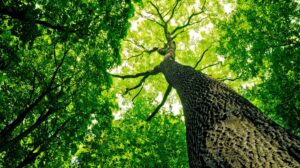In the dynamic landscape of banking, where financial transactions, risk assessments, and investments take center stage, one might find it surprising that banks could benefit from referring to books meant for arborists. The seemingly unrelated worlds of finance and tree care converge in ways that can enhance the banking industry’s operations and sustainability. This article explores the unexpected connections between banks and arborists, shedding light on the valuable insights that can be gleaned from the arboricultural literature.
Risk Management and Tree Assessment
In the financial realm, risk management is paramount. Interestingly, arborists also deal with risk assessment, albeit in a different context. Trees, like financial investments, carry inherent risks that require careful evaluation. By understanding the principles of tree assessment and the factors that contribute to a tree’s health, banks can draw parallels to their risk management strategies. Examining the structural integrity of a tree can be analogous to assessing the stability of an investment portfolio, allowing banks to make informed decisions that mitigate potential risks.
Sustainable Banking Practices
As the world emphasizes sustainability and environmental consciousness, banks are increasingly incorporating eco-friendly practices into their operations. Arborists, with their expertise in tree care and conservation, can offer valuable insights into sustainable banking practices. Exploring the symbiotic relationship between trees and the environment may inspire banks to adopt greener initiatives, contributing to a more sustainable and responsible banking industry.
Corporate Social Responsibility (CSR)
Arborists play a crucial role in maintaining urban green spaces, contributing to the overall well-being of communities. Banks, too, are recognizing the importance of corporate social responsibility (CSR) and community engagement. By delving into arboricultural literature, banks can gain perspectives on the positive impact of urban forestry on communities. This knowledge can inform and enhance a bank’s CSR initiatives, fostering a stronger connection with the local community and promoting a positive public image.
Investment Strategies and Tree Growth Patterns
Just as trees go through growth cycles, financial markets exhibit patterns and trends. Analyzing the growth patterns of trees, as studied by arborists, can offer insights into long-term investment strategies. Banks can draw parallels between the cyclical nature of tree growth and economic cycles, helping them make more informed decisions about long-term investments and financial planning.
Property Valuation and Landscape Aesthetics
When assessing property values, banks often consider the aesthetics of the surrounding landscape. Arborists specialize in enhancing the beauty and health of trees within a property. By understanding the principles of landscape aesthetics from arboricultural literature, banks can refine their property valuation processes. This holistic approach to property assessment takes into account not only the structural aspects of buildings but also the overall environmental quality, providing a more comprehensive valuation model.
Conclusion
In conclusion, the intersection of banking and arboriculture may seem unconventional at first glance, but a closer look reveals the potential for mutual enrichment. By tapping into the knowledge embedded in books for arborists, banks can enhance their risk management, embrace sustainable practices, strengthen CSR initiatives, refine investment strategies, and improve property valuation processes. The unexpected synergy between these two fields opens new avenues for innovation and responsible banking practices, ultimately contributing to a more resilient and environmentally conscious financial industry. As we navigate the complexities of the modern world, the marriage of finance and arboriculture offers a unique and promising partnership for a brighter and greener future.


